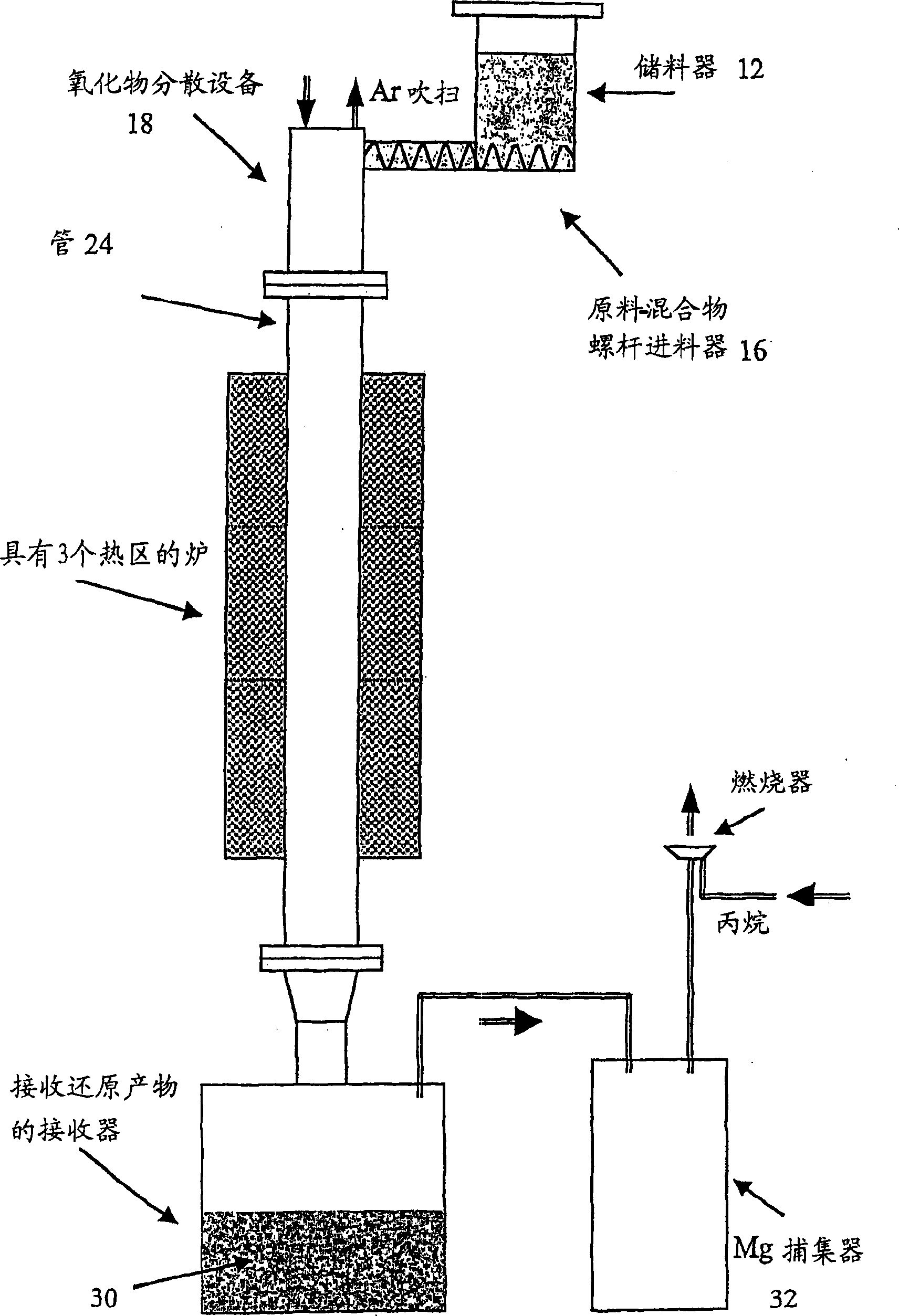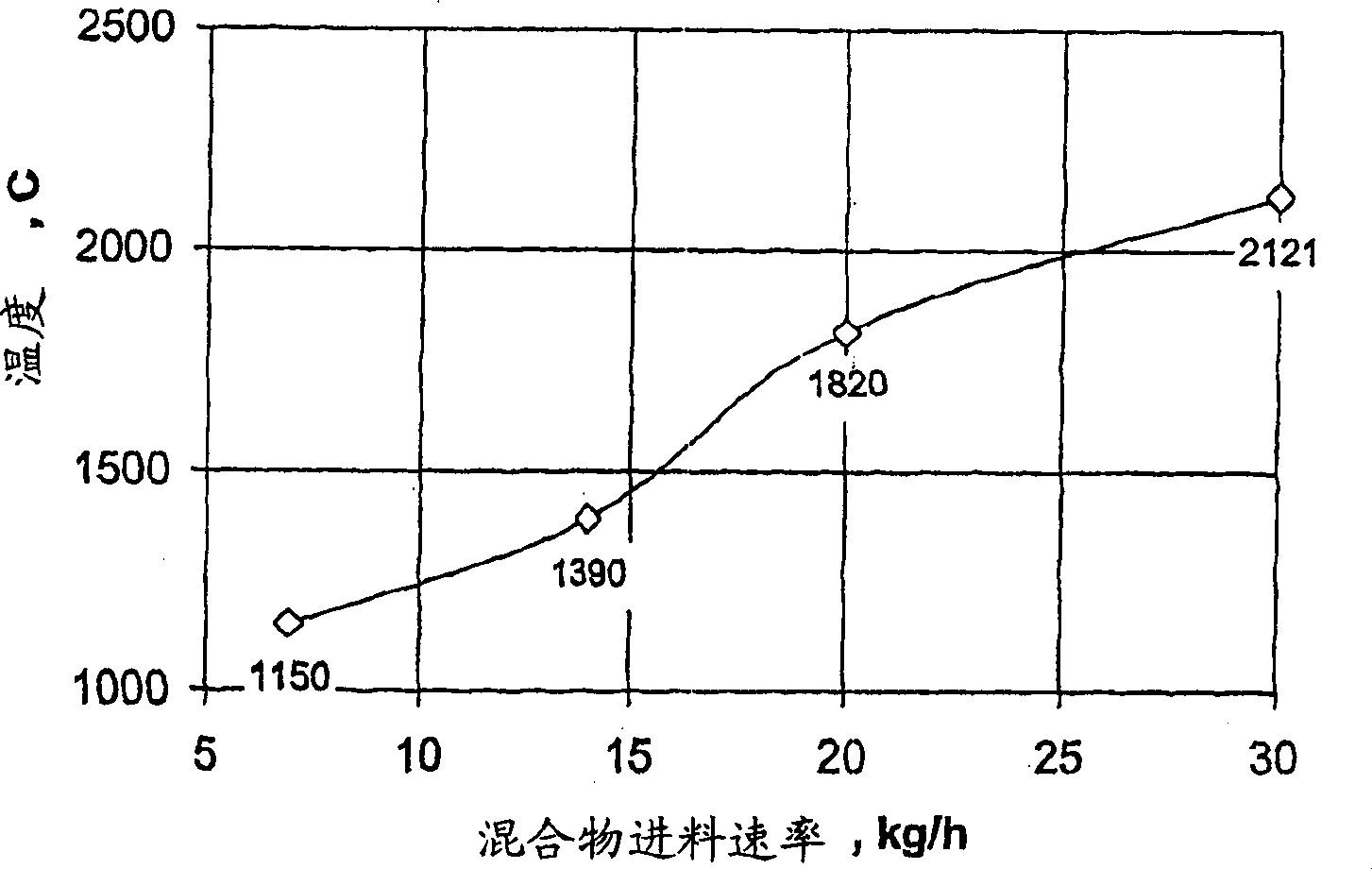Metalothermic reduction of refractory metal oxides
A refractory metal and oxide technology, applied in the directions of chromium oxide/hydrate, low-value titanium oxide, titanium oxide/hydroxide, etc. The effect of metal oxide reduction
- Summary
- Abstract
- Description
- Claims
- Application Information
AI Technical Summary
Problems solved by technology
Method used
Image
Examples
Embodiment 1
[0052] Such as figure 2 As shown, tantalum pentoxide was reduced by gaseous magnesium. The temperature in the magnesium melter is 975°C, while the temperature inside the furnace is maintained at 985°C to prevent condensation in the cold parts. The argon flow through the melter and furnace was 55 standard cubic feet per hour (scfh). The average feed rate of oxide was 1.5 kg / h. Reduction lasted 3 hours. After passivation, the receiver is opened and the product is leached with dilute sulfuric acid to remove residual magnesium and magnesium oxides. The blocks were then dried in an oven at 65°C and analyzed. The reduced powder has a surface area of 17m 2 / g, bulk density is 26.8g / in 3 , and the oxygen content is 13.2 W / W%. The inability to maintain consistent oxide and magnesium feed rates resulted in an unstable self-sustaining reaction during the run, whereby the reduction was only 60% complete.
Embodiment 2
[0054] The temperature of the reaction zone was estimated by energy balance calculations, and the results were plotted as a function of mixture feed rate in image 3 . The following assumptions were made:
[0055] (1) The energy loss value is estimated to be 30% of the energy input. This is a reasonable approximation for the furnace design utilized.
[0056] (2) The chemical reaction kinetics are instantaneous and independent of the oxide or magnesium particle size.
[0057] (3) The flow rate of argon is 1.8Nm 3 / hr.
[0058] (4) Furnace temperature is 1150°C.
[0059] image 3 Indicates that the reaction zone temperature can vary significantly with the feed rate. At a mixture feed rate of 7 kg / hr, the reaction zone temperature was indistinguishable from the furnace temperature, while at a feed rate of 30 kg / hr the reaction zone temperature exceeded the melting point of tantalum pentoxide. When the temperature of the reaction zone is above the melting point of the oxid...
Embodiment 3
[0061] Figure 4 represents the reduction of Ta with magnesium powder at several feed rates of the mixture 2 o 5 Furnace power readings in the process as a function of time. The curve represents the power value as a function of mixture feed rate. The higher the feed rate, the greater the reduction in power. In fact, at a mixture feed rate of 20 kg / hr, the electrical power input was reduced from 46% to 6%. In other words, the furnace does not supply energy to the system. This is strong evidence for a stable self-sustaining reaction in the reactor.
PUM
| Property | Measurement | Unit |
|---|---|---|
| Surface area | aaaaa | aaaaa |
Abstract
Description
Claims
Application Information
 Login to View More
Login to View More - R&D
- Intellectual Property
- Life Sciences
- Materials
- Tech Scout
- Unparalleled Data Quality
- Higher Quality Content
- 60% Fewer Hallucinations
Browse by: Latest US Patents, China's latest patents, Technical Efficacy Thesaurus, Application Domain, Technology Topic, Popular Technical Reports.
© 2025 PatSnap. All rights reserved.Legal|Privacy policy|Modern Slavery Act Transparency Statement|Sitemap|About US| Contact US: help@patsnap.com



